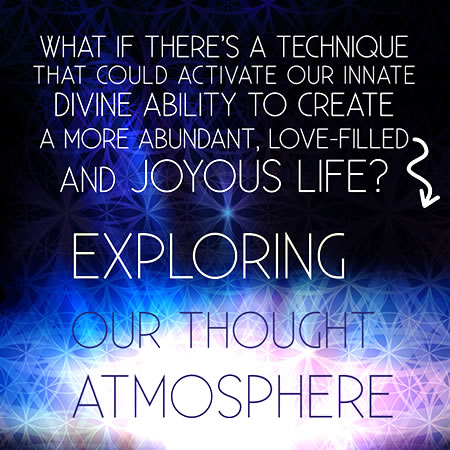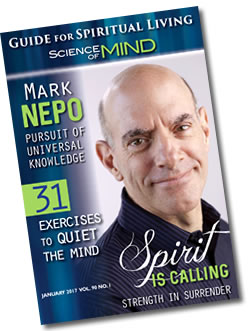 |
|
||
 |
||
 ...more |
||
 |
||
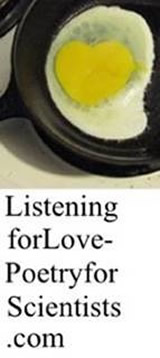 ...more |
||
 |
||
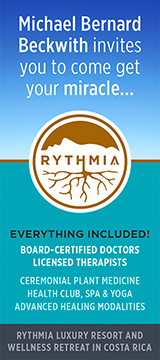 ...more |
||
 |
||
|
||
 |
||
 |
||
 |
||
 |
||
Find More Ways to Listen Teacher, author, poet and philosopher Mark Nepo offers an interesting view of learning to listen. In his book “Seven Thousand Ways to Listen,” he explores what he calls “staying close to what is sacred and giving up what no longer works.” He explains the book’s title with this story: “When I first met this amazing linguist from Nigeria, he was talking to me about all the living languages on Earth, and he said there were 7,000 ways to speak. … I said, ‘Well, if there are at least 7,000 ways to speak, there have to be 7,000 ways to listen.’
“Listening is being, when we can, as completely present to whatever is before us with all of who we are.” What are your ways to listen — and have you reached the 7,000 mark yet? Learn more about Nepo’s work in the cover article of the January issue of Guide for Spiritual Living: Science of Mind magazine. The article was written by Publisher and Editor Dr. David S. Goldberg. |
||||||||||
Have Trouble Keeping Your Resolutions?
Sports Psychologist Dr. Stephen Graef has a suggestion for those who make resolutions with the New Year but might have trouble keeping them. Graef, who works at the Ohio State Wexner Medical Center, suggests we focus on the simple acronym “P.A.S.T.” Here is his explanation.
And remember, the most important thing of all is to accept ourselves a little more, regardless of where we are in life. For more of Graef’s advice, visit www.koaa.com/story/34146159/tips-on-keeping-your-new-years-resolution |
||||||||||
Explore Your Thought Atmosphere Dr. Ernest Holmes gave us a powerful concept, that of a “thought atmosphere” that enables us to activate our innate divine ability to create abundant, love-filled and joyous lives. He explains: “Every person is surrounded by a thought atmosphere. This mental atmosphere is the direct result of conscious and unconscious thought, which in its turn, becomes the direct reason for, and cause of, that which comes into his life.”
In our January magazine, Victoria Loveland-Coen explores this concept and gives a step-by-step process for creating a greater experience in life, based on our thought atmosphere. Those steps are:
“Practicing this visualization on a regular basis creates a receptivity in your energetic atmosphere,” she explains. “By intentionally including in your vibration the essence of the external experience you desire, you are generating a state of acceptance.” Read more about creating your thought atmosphere in the January issue of Guide for Spiritual Living: Science of Mind magazine. |
||||||||||
The Law of Prayer Is a Conscious Unification
We note that, through the ages and in every faith, people have been healed by prayer. Since the fact of such healings is incontrovertible, there must be a law governing them. Nothing is ever the result of chance, the caprice of nature or the special indulgence of God. All that is or that may be has behind it some beneficent and unerring law that is at once impersonal and universal. The prayer of faith, therefore, is the expression of a very definite spiritual law — a law that underlies the conscious uniting of our specific need with the Power, the Intelligence and the Love which constitute the very heart of all life. As individual intelligences, you and I communicate with each other, and in so doing we establish the fact that intelligence responds to intelligence. This same law must hold, whether we think of finite intelligence responding to the finite or whether we think of Infinite Intelligence responding to finite intelligence; for intelligence is the same in essence wherever we find it. We may rest assured that Infinite Intelligence and Love respond to us by the very necessity of being true to their own nature. Prayer is simply the unifying of our particular mind with the Universal Mind — the conscious unification of our particular life with the Whole. Prayer for bodily healing or for any other blessing of life is, then, an intelligent act, since it is the reverent and conscious integration of our life, in all of its aspects, with the Power and the Love that governs all nature. This is an excerpt of “Religious Science Fundamentals,” written by spiritual visionary Dr. Ernest Holmes and further excerpted in the January issue of Guide for Spiritual Living: Science of Mind magazine. |
||||||||||
|
||||||||||
|
||||||||||
| ||||||||||
 |
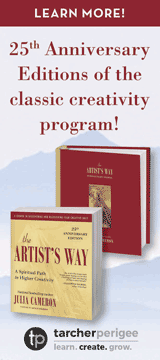 ...more |
 |
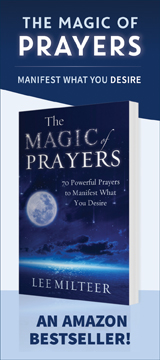 ...more |
 |
 ...more |
 |
 ...more |
 |
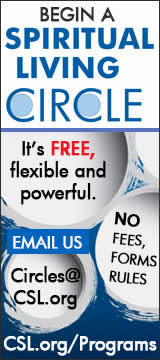 ...more |




